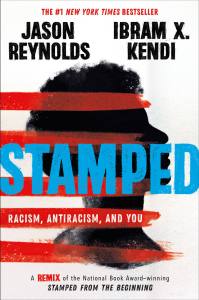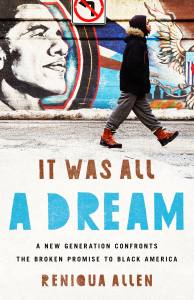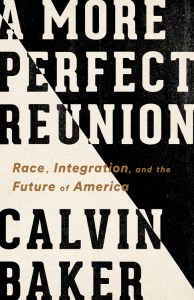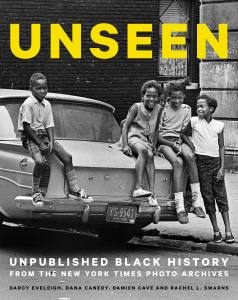20 Books on Black History to Read Beyond February
Many don’t know this, but Black History Month has a history all its own. It began as Negro History Week nearly a hundred years ago in 1926, and then developed to the full month in 1970 in the United States. Now, people of all colors and creeds celebrate the famed month worldwide. I always enjoyed finally getting to learn about Black historical figures in school once February rolled around, but felt saddened that they seemed to be cordoned off in their own little section of the school year, as if Black history is not directly intertwined with the legacy of the United States as a whole.
We need to advocate for the celebration and study of Black history year-round—both in our school systems and in our personal lives. So, let’s begin by taking a small (but crucial) step: remembering the power and resistance of Black history throughout the year by delving into the fantastic pieces of literature available to us on the subject. The twenty books on this list are a great place to start, reminding readers both of how far we’ve come and how much we’ve left to do.
One of the most pervasive myths clouding American consciousness today is that of the "post-racial society". Ibram X. Kendi brilliantly destroys this misconception (and many others we might still hold onto) in this sweeping exploration of the history of race and racism. In Stamped from the Beginning, Kendi also advocates for a position he's now well known for—that of antiracism and active pushback against racist ideologies instead of merely saying one is not racist. There's a reason this book won the National Book Award. Its remarkable ideas coupled with really accessible language make this a stand out hit.
You're never too young to start thinking critically about the world around you. But many times, essential texts about society seem to be written for those with PhDs! The people behind Stamped understood this blindspot, cultivating a young adult version of Kendi's original title above. Jason Reynolds, a giant of the YA universe, teamed up with Kendi to remix this edition for a younger generation, culminating in a genuinely groundbreaking and easily understood deconstruction of racism. Young people who seek to learn more about important issues around them would do well with Stamped.
Generations often struggle with the same issues as those who came before, just in new iterations. For Black millennials, as Reniqua Allen exposes in It Was All a Dream, racism still rears its ugly head in their lives but in new forms and with new histories to look back on. Situated between the activism of their elders and the disappointing racial realities of the current moment, Black millenials share their frustrations, their passions, and their strategies for combating racism in the new age.
When Darnell L. Moore was fourteen, a group of boys tried to set him on fire in a homophobic hate crime attempt. He escaped, thankfully, and thirty years later Moore is an award-winning journalist and advocate in the same harsh and unforgiving world. Moore honors readers by sharing the details of his inspiring journey in this intimate and stirring memoir that celebrates liberation and the voices of the unheard on every page.
If your public high school was like mine, you learned about Brown v. Board of Education, where the Supreme Court ruled racial segregation in schools was unconstitutional, and then...nothing else. Nothing much about how even today, segregation—though illegal on paper—still thrives across the country. In A More Perfect Reunion, Baker argues that the United States' failure to truly solve segregation is what has kept racial equality from progressing to where it should be. Analyzing everything from contemporary pop culture to the controversial issue of busing in schools, Baker sets the record straight with accessible prose and data.
Diversity is the buzzword in every board room, every HR office, every college campus. And from that popularity has sprung a billion dollar price tag, as organizations and companies and schools pour money into efforts to diversify their population. But has that made much of a dent in the racial makeups of these places? In Diversity, Inc, Pamela Newkirk illuminates the truth of these initiatives, and why progress has been creeping along at a snail's pace.
The past decade in American history has included events, trends, and realizations that disrupted the post-racial myth many Americans subscribed to for so long. Along with that belief, Mychal Denzel Smith confronts the legacies of other myths we buy into—American exceptionalism, narratives of greatness and progress, and the American Dream itself—in the essays that make up Stakes is High. With every cutting exposé, Smith helps readers look at the United States with fresh eyes and a critical lens.
It might be strange and even counterproductive to think of racism as having a scientific component, but Beverly Daniel Tatum has studied the psychology of racism and produced this incisive read. Why Are All the Black Kids Sitting Together in the Cafeteria addresses the titular question and much more, arguing for explicit conversations about race all the while. In addition, it was recently revised, so its expansive insights from nearly two decades ago remain up to date and just as hard-hitting.
How do you raise a child in an unjust world? It's a question that reporter Dani McClain must grapple with in We Live for the We. As a Black woman she knows all too well the harsh reality her child will grow up in, and so cultivating joy and safety for her child is paramount. In this way, McClain creates a sort of handbook for raising children amidst inequality, valuing community and creativity in the face of the struggle and drawing from a variety of resources to find a solution for one of parenthood's toughest questions.
Listen, there's a reason that Mychal Denzel Smith has two entries on this list. His observations and critiques as a young Black man in America are always on point. In Invisible Man, Got the Whole World Watching, Smith chronicles his personal growth while providing poignant social commentary. He consistently confronts harmful assumptions like those surrounding Black masculinity, mental health, or feminism, urging the reader to muse thoughtfully on the tough but crucial questions.
Archival work is the backbone of historical preservation and understanding—it allows us to come as close to the past as we can, nearly touching it. The New York Times archives have a rich past, and in Unseen, four collaborators come together to unearth previously unpublished photographs that document Black history, featuring figures like Rosa Parks, Aretha Franklin, and Ralph Ellison. This book raises questions about which instances and images are deemed worthy, which are left to collect dust—and why?
Many people have provided suggestions for what they think are underlying causes of racism. Jane Dailey, in White Fright, convincingly argues that the fear of Black sexuality has been a central tenet to white supremacy from its inception. She gathers damning evidence from various eras of oppression, citing examples like widespread anxiety about interracial marriage to tragic events like the murder of Emmett Til. Dailey's work brings a fresh and bold lens to this field of study, placing sex as fundamental to major moments in the history of the United States.
The Black Lives Matter movement thundered through the United States (and beyond) after the death of Michael Brown. The response to the cruelty and injustice ignited a movement of an unparalleled magnitude, beginning a new era of civil rights activism. In They Can't Kill Us All, Washington Post reporter Wesley Lowery scours the streets of America in order to examine the effects of racism, policing, and violence on marginalized neighborhoods across the country. Lowery also imbues the reader with the necessary knowledge in order to understand how the Black Lives Matter movement came to be, reaching back in time to document the Black community's long history with unjust police treatment.
One of the reasons why Black history is crucial to study is that it can inform a more practical goal: actually talking about race. This is where the hard part comes in, but it's a necessary element of antiracist work. Though common adages suggest not to talk "religion or politics at the dinner table", inevitably, these subjects do come up. When they do, there are ways to have fruitful conversations... and ways to have frustrating ones. As you can probably guess from the title, So You Want to Talk About Race's author Ijeoma Oluo demystifies talking about race in a user-friendly and helpful way, perfect for those eager to start making a change at home or in their community.
A list of books about Black history should always have some poetry included. Poets have long been the voices of the unheard, speaking truth to power in ways few else can (think Langston Hughes, Maya Angelou, and even the poetics of rap music). Zetta Elliot follows in this tradition in Say Her Name, inspired by the hashtag that seeks to bring much-needed attention to Black women and girls. Elliot brings nearly fifty poems to life in this collection, frequently calling upon the rich cultural tradition of which she is a legacy.
Sometimes it's difficult for people see the connections between racism and the environment—at first glance, they seem scarcely related. But in fact, as Harriet A. Washington reveals in A Terrible Thing to Waste, environmental racism is insidious, tangible, and very very real. Elements of the environment like pollution, disease, and waste are directly entangled with racism's long past, and Washington unravels the threads here with ease. Thankfully, Washington also offers solutions to these problems, which she expertly lays out in this devastating text.
Conversations in Black mirrors exactly that: a conversation. Veteran journalist Ed Gordon guides readers through hard-hitting questions about race and their answers by bringing in Black figures from pop culture, academia, and activism to speak on various subjects. Gordon asks about everything from Black Girl Magic to the 2020 Election, offering a window into the Black zeitgeist, incredibly varied opinions and all.
Matthew Horace was a policeman for 28 years, rising up the ranks from street cop to federal law enforcement executive. He's seen the ins and outs of the law enforcement world, and during that time he has personally witnessed the structural (and individual) racism present in a profession he still greatly respects. Horace compiles his experiences and observations in The Black and the Blue, offering an insider perspective on systems and policies that have harmed communities of color for a very long time.
Women and girls have always been at the forefront of the civil rights movement—regardless of if they were given their rightful places in the textbooks. In A Girl Stands at the Door, historian Rachel Devlin highlights the young Black women and girls who put their safety on the line in order to desegregate schools. If not for their efforts, who knows whether the movement would have gained enough traction to eventually make its way to the Supreme Court? Here, Devlin does the important work of making sure the contributions of Black women and girls did not go unnoticed.
It felt important to end this list not just on a note of learning about Black history (which is, of course, endlessly vital to the project of antiracism) but on a note of taking that gained knowledge and putting it to work. Colorlines editors Akiba Solomon and Kenrya Rankin join forces to showcase the many forms that resistance can take, collecting blueprints from prominent Black voices to form How We Fight White Supremacy. Figures like Ta-Nehisi Coates, Imani Perry, and Hanif Abdurraqib share valuable insights, making a roadmap of sorts for those ready to not only know about the world around them, but change it, too.






















